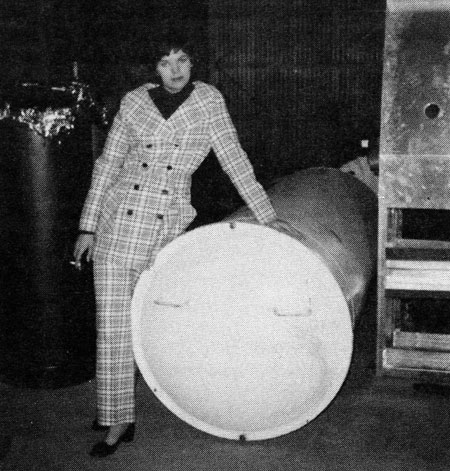From “Inside the Immortality Business,” Josh Dean’s excellent Buzzfeed report about cryonics, a passage about the first-ever “cryonaut”:
“At one end of Alcor’s conference room is a picture window of the kind you see in police interrogation rooms. It’s typically covered with a metal screen, but Mike Perry, the company’s Patient Care Director, pushed a cartoonishly large red button and it raised to reveal the cold storage room, which if you’ve been on a brewery tour, basically looks like that. On the far wall is a row of towering silver canisters containing four patients each (claustrophobia is not a concern of the cryopreserved) — plus another eight or 10 frozen heads, which are stored in crock-pot-sized cans and stacked in the canister’s center channel. Each capsule, Perry explained, is cooled to 320 degrees below zero Fahrenheit using liquid nitrogen and requires no electricity. Canisters operate on the same basic principle as a thermos bottle; they are double-walled with a vacuum-sealed space between the two walls and are known as dewars, for the concept’s Scottish inventor, James Dewar. The chamber itself is filled with liquid nitrogen and is replenished weekly from a huge storage container, though in truth, Perry noted, that’s overkill. A test canister once went eight months before all of the nitrogen finally boiled off, so there’s little reason to worry about your frozen loved ones thawing should the nightwatchman fall asleep on the job.
Perry, who is gaunt, wispy-haired, and hunchbacked (a condition he hopes will be fixed when he’s revived down the road), drew my attention to another unit, horizontal and obviously much older, on the floor just on the far side of the glass. This container once held Dr. James Bedford who, in 1967, became the world’s first-ever cryonaut, as the fervent press at the time dubbed him. Perry said that security reasons prevented him from identifying precisely which of the new capsules now contained Bedford, or for that matter the baseball legend Ted Williams, who is the most famous ex-person publicly known to be in Alcor’s care. (Walt Disney, contrary to urban legend, was never frozen. Neither was Timothy Leary, who was once an Alcor member, but later canceled.)
Cryonics as a concept has existed in science-fiction for more than a century, but it traces its real-world origins to the 1964 publication of The Prospect of Immortality. That book, written by a physics and math professor from Atlantic City named Robert Ettinger, opened with a bold proclamation: ‘Most of us now living have a chance for personal, physical immortality.’ Ettinger went on to lay out, in a very specific and carefully constructed scientific argument, why humans should immediately begin to consider this plausible alternative. He wrote: ‘The fact: At very low temperatures it is possible, right now, to preserve dead people with essentially no deterioration, indefinitely.’ Ettinger called this ‘suspended death’ and the overall movement he hoped would grow up to support it ‘the freezer program,’ an ominous phrase that didn’t stick for obvious reasons. (In a later book, he called it being ‘preserved indefinitely in not-very-dead condition,’ which is so hilariously stiff as to sound bureaucratic.)”
Tags: James Bedford, Robert Ettinger, Timothy Leary, Walt Disney

